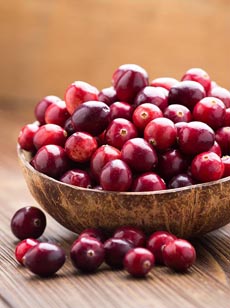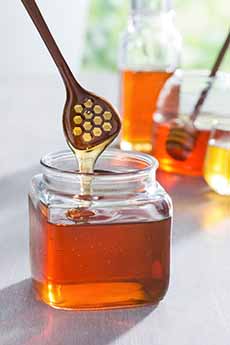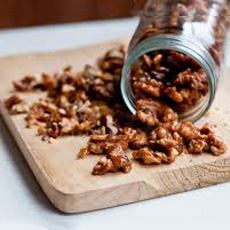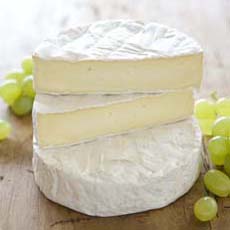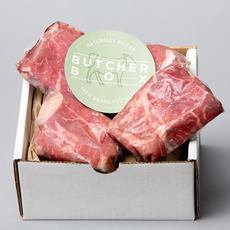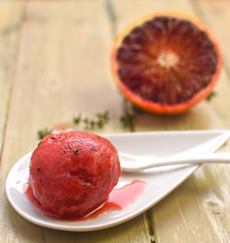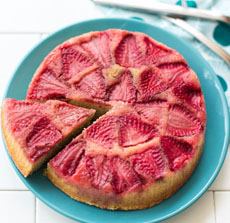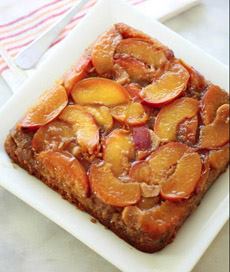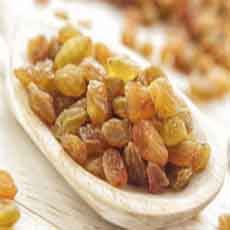|
Baked Brie is a special-occasion favorite, and very easy to make.
It goes great with sparkling and still wines and cocktails.
In the spirit of the season, this easy recipe from Liren Baker of Kitchen Confidante will have guests fighting for the cheese knife. It’s a good thing this recipe makes two wheels!
TIP: If you’re short of time, buy the whole cranberry sauce and only quickly the pecans in spice without candying. You’ll still have a holiday theme on top of the brie.
Note that Brie is capitalized because it is the name of a town. Many cheeses, especially in Europe, are named after their towns of origin, and are capitalized (Cheddar, Gouda, Munster, etc.) in the same way that one would capitalize Boston, Chicago, and New York if cheeses were named for them.
> A recipe for candied or spiced nuts is below.
> The history of Brie is below.
> The history of cheese.
> The different types of cheese: a glossary.
RECIPE: CRANBERRY POMEGRANATE BAKED BRIE
Ingredients For 2 Eight-Inch Wheels
12 ounces fresh cranberries (about 3 cups)
1 cup pomegranate juice
1 cup table sugar, to taste
1 cup pomegranate arils
2 eight-ounce Brie wheels
1/4 cup honey
1/2 cup candied pecan or walnut halves
Garnish: fresh rosemary, spiced or candied pecans or walnuts*
Breads and/or crackers for serving
Preparation
Our recommendation is to cook the cranberries two days in advance. The sweetness of the juice and sugar needs time to penetrate the tartness of the cranberries.
1. COMBINE the cranberries, pomegranate juice, and sugar in a small saucepan over medium-high heat. Bring to a boil, turn the dial to simmer, and cook for 5-10 minutes, or until all cranberries have popped.
2. STIR in the pomegranate arils. Transfer to a jar with a lid; cool completely before adding the lid and placing the cranberries in the fridge. After the first day, taste and add more sweetener as desired.
3. REMOVE the cranberries from the fridge a few hours before serving; allow them to come to room temperature.
4. PREHEAT the oven to 350°F. Place the wheels of Brie on ovenproof serving dishes or on a parchment-lined baking sheet. Bake for about 7 minutes, until the cheese starts to soften. Top with the honey and cranberry pomegranate sauce and return to the oven for about 2-3 more minutes, or until the Bzrie is gooey and soft.
5. REMOVE from the oven, top with candied walnuts, and garnish with rosemary. Serve warm with different breads and crackers.
RECIPE #2: CANDIED OR SPICED NUTS
You can candy the nuts—sugar only—or add spice for spiced nuts.
Ingredients For 1/2 Cup
1/2 tablespoon butter
1 tablespoon sugar, honey, or maple syrup
1/2 cup nut halves
For Spiced Nuts
1/8 teaspoon total* cinnamon, nutmeg, cloves, allspice and/or cayenne
________________
*Try this small amount and then increase the spices according to your preference.
Preparation
1. MELT the butter in a small skillet over medium-high heat. Add the sugar, stirring constantly until it dissolves. Take care that the mixture doesn’t scorch.
2. ADD the nuts and stir to coat thoroughly. Pour the nuts onto a sheet of aluminum foil and let them cool, about 15 minutes. Store for up to 2 days in an airtight container.
THE HISTORY OF BRIE
Brie, the pillowy, soft, creamy, mild cheese beloved by many, hails from the Île-de-France of Northern France (the most populous of the 18 regions of France).
It is traditionally made from cow’s milk and is aged for different lengths of time, the longer of which produce a runny paste and mushroomy notes
The history of the cheese can be traced back to the Middle Ages and has become one of the most popular and well-known French cheeses.
Medieval Times. Based on its name, Brie is believed to have been created in the historic region of Brie, which is located in the eastern part of modern-day Île-de-France.
Brie cheese was originally made by Medieval monks there, produced as a way to preserve surplus milk.
As an aside: Cheese-making was a valuable skill, and fine cheeses were used to pay taxes and tithes to the local feudal lords.
The Renaissance. By the 17th century, Brie had traveled beyond France to European royal courts. It was served at the table of King Louis XVI and became associated with luxury and indulgence.
Over the centuries, production techniques for Brie cheese evolved. The cheese became more refined and creamy, with a characteristic bloomy white, edible rind.
Modern Times. In 1980, Brie de Meaux and Brie de Melun, two distinct types of Brie cheese, received the prestigious Appellation d’Origine Contrôlée (A.O.C.) status from the French government.
This recognition ensures that only cheese produced in these specific regions and following traditional methods can be labeled as “Brie de Meaux” or “Brie de Melun.”
Other Bries are made in Île-de-France, without an A.O.C. designation (and by definition, less splendid than the two A.O.C.s.
Brie is now enjoyed worldwide and is a staple on cheese platters, sandwiches (with prosciutto on a baguette, or grilled cheese), in salads, and various recipes.
While many Brie-style cheeses are still produced in France, they are also made in other parts of the world, often following similar techniques and recipes.
The French government officially certifies only two types of Brie, Brie de Meaux and Brie de Melun.
There is also now triple-cream Brie, which is even creamier and richer.
Some cheese-makers make smoked Brie (here’s a recipe to smoke your own).
In any form, Brie continues to be an iconic French cheese and a favorite among cheese enthusiasts around the globe.
|

